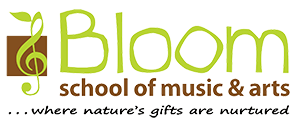Let’s count! (Sing-along Song: One Little Finger)
Do you want to do magic?
And no, you do not need to have special props! All you need are…
your hands!
Toddlers are especially tickled with finger plays because they are at the age where “their greatest need and most persistent drive is to explore the exciting world that beckons them” (Heyge, L. & Sillick. A., 2003). When you are doing the finger play or action song, toddlers want to attempt to copy you, because they want to attain control and mastery of their body movements.
Children need to move, because they learn through movement.
– Lorna Heyge, Ph.D., & Audrey Sillick
To gain mastery of body movement, parents can support their babies and toddlers by practising every action over and over. In doing so, the repetitions strengthen and enhance the the body, mind, and neural connections, which are critical to this stage of child development. Kinesthetic awareness—an inner sense below the conscious level that contributes information about how the body feels as it moves—is invaluable to all learning. As their body become better coordinated, their body also “becomes an expressive instrument with ever higher levels of awareness and complexity” (Heyge, L. & Sillick. A., 2003).
Besides our hands, we also need the right words.
Nursery rhymes and chants are an extremely useful source of repetitive alliteration (the occurrence of the same letter or sound at the beginning of adjacent or closely connected words) and rhythmic beat, and poetry and songs amplify the music of language. Children need “words to label their experiences so that they can be communicated” (Heyge, L. & Sillick. A., 2003). Thus, repetitive finger plays and songs which combine words with appropriate actions are helpful both musically, and to children’s language development. What is a better way to help children maintain a spontaneous approach to the work of creating language than by making it playful and fun with musical play; let children talk to themselves, make up words and silly sounds for their songs, and this will help them practise the rich phonetic content that leads to shaping speech and listening skills.
Not only does music offer children a means of communication (because it soothes, stimulates response, and focuses attention), music is also a wonderful way to send messages or teach/learn! When children are allowed to take responsibility for their own learning, they gain not only knowledge, but also problem-solving skills, thinking skills, self-confidence, and self-esteem.
Lorna Heyge, Ph.D., and Audrey Sillick, the founders of Musikgarten, understand the benefits of music for babies and young children, and have done extensive research to create their acclaimed Early Childhood Education music programmes Family Music for Babies (FMB) and Family Music for Toddlers (FMT). They advocate for active music-making as a family because they believe that children are innately musical, and children need the immersive and supportive environment to flourish not only as a musician, but holistically as a child all through to adulthood.
Bloom School of Music & Arts is one of the few schools in Singapore to offer these Musikgarten programmes, and we would love for you to discover the magic and wonder of the Musikgarten experience. Music is a gift that will last a lifetime.
So come on down to schedule a free* Musikgarten trial with us!(* Celebrate Bloom’s 15th birthday with this special offer!
Send us a message on WhatsApp at 92783315 to book a trial!)
I love using music during preschool lessons because it is more enjoyable! Not only do you retain information better, music just makes learning much easier; tell me you did not learn the ABCs without singing it!
This is one action song I love singing with toddlers, because you will see them try to imitate you. One Little Finger is a simple and fun song to learn counting to!
1. When you sing “Meow, Meow, Meow, like a cat”, you are supporting children’s language building, and helping them making connections in their brains.
2. As you question children “How many fingers do I have now?”, you are actively encouraging them to respond to the musical questioning (call-and-response).
3. When you show the number of fingers (from their left to right, one finger, two fingers) as you say the words (“One”, “Two”), you are showing children how to count in one-to-one correspondence.
4. As the children attempt to imitate your intentional, purposeful, and appropriate actions, they are practising and strengthening their body coordination.
Now, you have one more song to add to your repertoire of bonding-with-child songs!
I hope this post has been useful for you in understanding the magic and power of finger plays and action songs.
Have fun, and happy bonding!
One Little Finger
One little finger, one little finger
One little finger, Tap tap tap!
Point your finger up,
Point your finger down,
Now put it on your nose
Boop!
(How many fingers do I have now? 1, 2!)
Two little fingers, two little fingers
Two little fingers, Tap tap tap!
Point your fingers up,
Point your fingers down,
Now put them on your head
Like a bunny!
(How many fingers do I have now? 1, 2, 3!)
Three little fingers, three little fingers
Three little fingers, Tap tap tap!
Point your fingers up,
Point your fingers down,
Now put them on your cheek
Meow, meow, meow! Like a cat!
(How many fingers do I have now? 1, 2, 3, 4!)
Four little fingers, four little fingers
Four little fingers, Tap tap tap!
Point your fingers up,
Point your fingers down,
Now put them on your chin
Ho, ho, ho! Like Santa Claus!
(Now how many fingers do I have? 1, 2, 3, 4, 5!)
Five little fingers, five little fingers
Five little fingers, clap, clap, clap!
Point your fingers up,
Point your fingers down,
Now put them on your tummy
Yummy, yummy!














